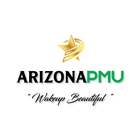Tattoo Trends Over The Centuries
Tattoo trends in the 20th century evolved significantly, reflecting broader social, cultural, and artistic shifts. Here's a decade-by-decade overview of key trends and developments:
1900s-1910s: Early Popularity and Sailor Influence
- Military and Nautical Themes: Tattoos became popular among sailors and soldiers, featuring anchors, ships, and patriotic symbols.
- Circus Performers: Tattooed individuals were often seen in sideshows and circuses, showcasing elaborate full-body tattoos.
1920s-1930s: Decline and Underground Culture
- Social Stigma: Tattoos faced a decline in popularity due to their association with criminal elements and lower social classes.
- Traditional American Style: Bold, simple designs with heavy outlines and limited color palettes emerged, laying the foundation for what would become known as "Old School" tattoos.
1940s: WWII and Patriotic Symbols
- Military Boom: Tattoos surged among soldiers during World War II, featuring patriotic symbols, pin-up girls, and commemorative designs.
- Flash Art: Pre-designed tattoo sheets (flash) became popular in tattoo parlors, making it easier for clients to choose designs.
1950s: Rebellion and Rock 'n' Roll
- Youth Rebellion: Tattoos became symbols of rebellion, popular among bikers and rock 'n' roll enthusiasts.
- Influence of Media: Movies and music icons, like Elvis Presley, contributed to the growing popularity of tattoos among young people.
1960s: Counterculture and Personal Expression
- Hippie Movement: Tattoos became a form of personal and artistic expression, with more diverse and intricate designs.
- Tattoo Artists as Celebrities: Notable tattoo artists, like Lyle Tuttle, began to gain recognition and celebrity status.
1970s: Artistic Evolution and New Styles
- Black and Gray Realism: The Chicano culture in East Los Angeles popularized fine-line black and gray tattooing, focusing on realistic portraits and scenes.
- Tattoo Conventions: The first tattoo conventions were held, promoting the exchange of ideas and techniques among artists.
1980s: Technological Advances and Mainstream Acceptance
- Tattoo Machines and Inks: Advances in tattoo machine technology and the development of safer, more vibrant inks improved the quality of tattoos.
- Mainstream Popularity: Tattoos began to be more widely accepted in mainstream culture, with increased visibility in media and fashion.
1990s: Tribal and Cultural Influences
- Tribal Tattoos: Inspired by Polynesian, Maori, and other indigenous tattooing traditions, tribal designs became a major trend.
- Diverse Styles: The 90s saw a blending of various styles, including Japanese, Celtic, and biomechanical tattoos.
2000s: Customization and Personal Meaning
- Custom Tattoos: The focus shifted to personalized and custom-designed tattoos, reflecting individual stories and meanings.
- Celebrity Influence: High-profile celebrities with tattoos, like Angelina Jolie and David Beckham, helped normalize tattoos across all social classes.
2010s: Fine Art and New Techniques
- Watercolor and Minimalist Tattoos: New styles like watercolor tattoos and minimalist designs gained popularity for their unique and artistic appearances.
- Social Media Influence: Platforms like Instagram allowed tattoo artists to showcase their work to a global audience, leading to greater innovation and creativity in tattoo design.


Leave a comment